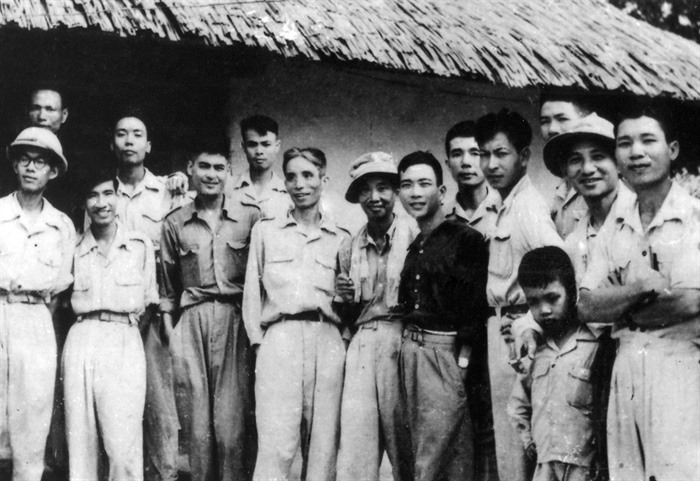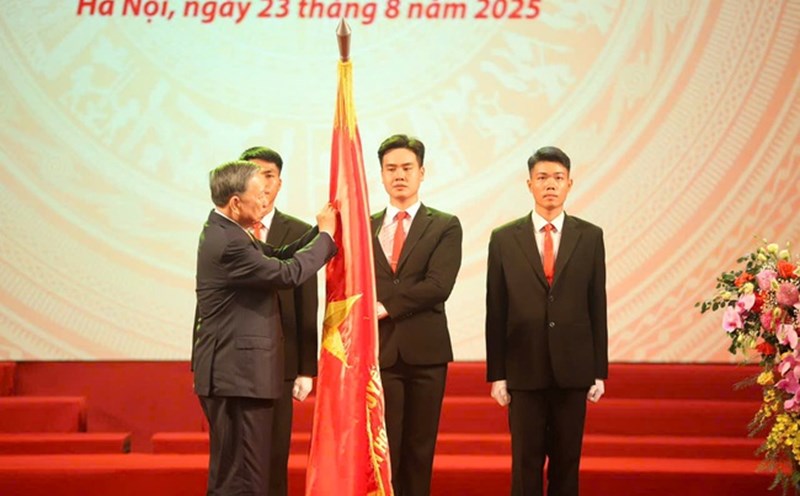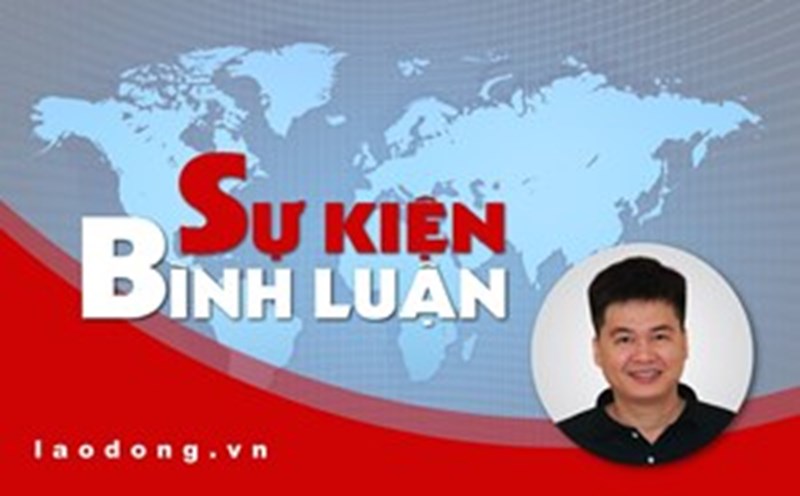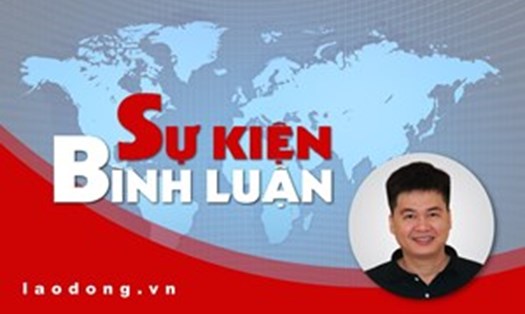In a conversation with Lao Dong reporter, Colonel Dao Van Phe - a veteran who participated in the Khe Sanh battlefield, Quang Tri in 1968 said that during the war years, the luggage of young soldiers on the battlefield always had a book full of poetry.
The soldiers of that day took to the battle with poetry and music. Culture - art have joined the nation in a tragic song throughout the journey of the two great national defense wars.
The brilliant journey of revolutionary culture and art
Declaration dated August 28, 1945 of the Provisional Government of the Democratic Republic of Vietnam in the national cabinet, the Ministry of Information and Propaganda was established (later renamed the Ministry of Propaganda and mobilization on January 1, 1946) - the predecessor of today's Ministry of Culture, Sports and Tourism. Since then, August 28 every year has become the Traditional Day of the Culture, Sports and Tourism (VHTTDL) sector.
The Culture, Sports and Tourism sector has had an 8-year journey accompanying the nation, going through a glorious, brilliant and proud journey, serving the country, serving the people, for independence, freedom and socialism.
Since February 4, at the Central Standing Committee Conference held in Vong La, the Party has approved the Outline on Vietnamese Culture drafted by General Secretary Truong Chinh. This is considered the first cultural program of the Party. The Party promotes the role and mission of the forces of people working in culture and art.
The three most important elements of the cultural revolution based on the Cultural Outline are: ideology, academia and art.
In particular, art (art literature) is an important and sophisticated field of culture, expressing the true aspiration, goodness, beauty, patriotism and fighting spirit of an entire nation.
After the First Cultural Conference held in 1946 and the Second Cultural Conference held in 1948, the artists and artists have never felt their role as creators and propagandists has been promoted.
The spirit of literary and artistic creation of the nation is pushed up. All cultural work is called for focusing on propaganda and encouragement for resistance tasks. Human values and patriotism are placed at the highest position.
Recognizing the historical mission on the shoulder, each artisan must commit and join the fight as a soldier. Each artist is a soldier on the cultural and ideological front.
At the National Cultural Conference in November 4, 1946 President Ho Chi Minh emphasized that "Culture must patch the way for the nation to go".
During the resistance war against France (1945-1954), with the motto "resistance culture, resistance culture", press, information, and propaganda work was promoted; diverse and rich forms of art developed from music, literature, stage, fine arts, then cinema... quickly promoted the strength, encouraged patriotism, and fighting spirit of the entire army and people.
On the cultural, artistic, music - literary fronts of Vietnam through the two national defense wars, classic works of a generation of talented and outstanding artists were born.
Where the pen comes from, singing becomes a weapon of war
In 1945, with the great historical turning point and victory of the August Revolution, the foundation was laid for the moment President Ho Chi Minh read the Declaration of Independence on the morning of September 2 - giving birth to the Democratic Republic of Vietnam (now the Socialist Republic of Vietnam). A new era for the nation has begun.

At that time, on the front line of cultural ideology, national spirit, and heroic revolutionary spirit, it left its mark forever through musical works such as: Military song (Van Cao), Diet Phat Xit (Nguyen Dinh Thi), Muoi Ninh Thuong Tam (Xuan Oanh) ... In which, the song "Viet Nam Ca" was chosen to become the national anthem of the independent country of Vietnam. "Marching Song" is still the sacred National Anthem of the Vietnamese people.
During the 9 years of the resistance war, from 1945-1954 on, Vietnamese revolutionary music developed brilliantly with songs of encouragement, calling on the entire people and army to volunteer for the prolonged resistance war against France, until the great victory of the Dien Bien Phu campaign.
Vietnamese literature in the period of 1945-1954 is imbued with the spirit of reality, reflecting the hard and heroic struggle, reflecting the hard but optimistic life, the whole nation steadfastly overcomes difficulties, sacrifices and losses, towards the day of victory.
Standing under the revolutionary flag, Xuan Dieu has The National Flag, Nguyen Huy Tuong wrote the play Bac Son, Chinh Huu has Comrade, Quang Dung has Tay Tien, To Huu has Viet Bac, Nguyen Dinh Thi has Dat dat...
The literary movement of the period 1945-1954 also reached its peak with many excellent authors such as Nam Cao, Nguyen Hong, Nguyen Tuan, Kim Lan, To Hoai, Ho Phuong... The literary movement (the district - the village) at this period recreated the crimes of the colonialists and the wrong hands, dissolved their deceitful illusion, thereby placing faith in the victory of the revolution.
During the period of 1954-2055, the country was divided, the North built socialism, and supported the Southern battlefield.
Vietnamese music reached its peak with red music, revolutionary music praising the love of the homeland, the spirit of determination to die for the Fatherland.
People's Artist Thanh Hoa - who followed the art troupe to serve the soldiers fighting along the Truong Son road from 1970-1974 - said that year, "the sound of singing over the sound of bombs", artists took to battle with the troops, bringing singing - music to cheer on the fighting spirit.
Literature from 1954-1975 closely follows the construction of socialism in the North, and the armed struggle of the nation on all military fronts.
The verses, "There is a happy time when the whole country goes on the way", "The road to the battle this season is very beautiful/Truong Son Dong remembers Truong Son Tay" ... were in the backpacks of soldiers going on the battle.
The singing and pencing voice of the Cultural Front has become a weapon, a power that can appeal to millions of hearts, both to cheer and comfort, to encourage fighting spirit, to praise the extraordinary war, and to shout and cry for support and to soothe national grief.
The two wars of national defense have shown that the cultural and information sector has accompanied and fought side by side with the nation, bringing its own strength on the front line, arousing strong patriotism, fostering a strong will to fight and build strong faith in the final victory of the revolution.
The forces of artists and revolutionary press have immersed themselves in practical combat, "using pens as a prop", "using art as a weapon". Artists and journalists truly became " Soldiers on the cultural - ideological front", directly participating in fighting or composing to encourage the fighting spirit.
The maturity of the Cultural sector in this period shows political mettle, resilience, flexibility, and the ability to adapt to all fierce war situations. Not only a tool for propaganda and struggle, culture is also a truly a strong source of endogenous strength, cheering and urging our army and people to defeat foreign invaders and unify the country.
Many artists and journalists have fallen on the battlefields, leaving the nation with invaluable pages of writing, works, and documentary footage.
July 31, 2007 marked a major turning point for the Sector: The Ministry of Culture, Sports and Tourism was established, performing the functions and tasks of multi-sectoral and multi-disciplinary management (Resolution No. 01/2007/QH12) on the basis of merging the General Department of Tourism, Committee for Physical Education and Sports; receiving the state management part of the family from the Committee for Population, Family and Children into the Ministry of Culture, Sports and Tourism.
From March 1, 2025, the Ministry will receive additional functions and tasks of state management of press, publishing and communication from the Ministry of Information and Communications.











